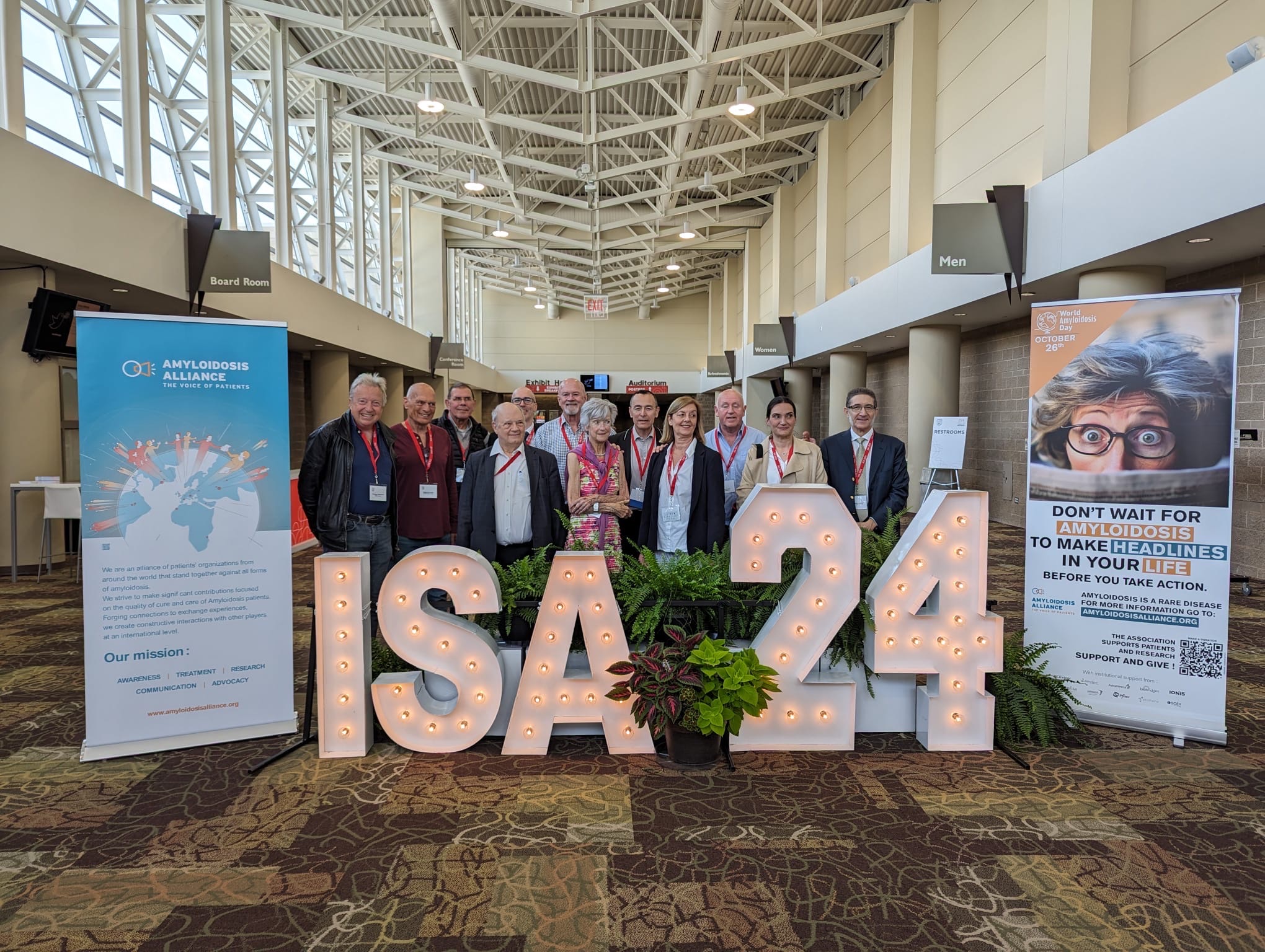From Sunday, May 26 to Thursday, May 30, 2024, the city of Rochester, MN hosted the XIX International Symposium on Amyloidosis. This prestigious event, a blend of in-person and virtual participation, proved to be a landmark in the field of amyloidosis research and treatment. Organized in collaboration with the International Society of Amyloidosis (ISA) Board and esteemed members of the Mayo Clinic, the symposium delivered a dynamic and engaging scientific program.
A Gathering of the Amyloidosis Alliance
The symposium witnessed the convergence of members from the Amyloidosis Alliance, a global consortium dedicated to improving the lives of those affected by amyloidosis through collaboration, research, and advocacy. This assembly of experts, researchers, clinicians, and patient advocates from around the world underscored the significance of this event in the amyloidosis community. Their presence highlighted the shared commitment to advancing knowledge, fostering innovation, and improving patient outcomes.
A Comprehensive Scientific Program
The scientific program of the symposium was meticulously designed to provide in-depth insights into various forms of systemic amyloidosis. Key focus areas included:
- ATTR Amyloidosis: Both hereditary and wild-type, exploring the genetic underpinnings and emerging therapies.
- AL (Light-chain) Amyloidosis: Addressing advancements in diagnostics and treatment options for this prevalent form.
- AA Amyloidosis: Discussing the complexities and management strategies of this inflammatory variant.
- Less Frequent Forms: Shedding light on rare types of amyloidosis, fostering a comprehensive understanding of the disease spectrum.
Attendees benefited from a blend of keynote lectures, panel discussions, and poster presentations, which provided a platform for the latest research findings, clinical trials, and innovative treatment approaches. The hybrid format ensured that participants who could not attend in person were still able to engage with the content and contribute to the discussions.
Importance and Impact
The XIX International Symposium on Amyloidosis was more than just a conference; it was a beacon of hope for patients and a catalyst for progress in the medical community. Here are several reasons why this event was particularly important:
- Collaborative Research: By bringing together a diverse group of experts, the symposium fostered a collaborative environment that can lead to groundbreaking research and discoveries.
- Patient Advocacy: The presence of patient advocates ensured that the voices and needs of those affected by amyloidosis were heard and addressed, guiding research priorities and treatment development.
- Education and Awareness: The event provided an invaluable educational opportunity for clinicians and researchers, enhancing their understanding of amyloidosis and its management.
- Innovation in Treatment: Discussions on the latest therapeutic advancements offered hope for improved treatments and potential cures, significantly impacting patient care and quality of life.
- Global Networking: The symposium facilitated networking among global stakeholders, encouraging the exchange of ideas and fostering international collaborations.
Conclusion
The XIX International Symposium on Amyloidosis in Rochester, MN, held last week, stood as a pivotal event in the amyloidosis calendar. With its comprehensive scientific program, emphasis on collaboration, and focus on cutting-edge research, the symposium made significant strides in the understanding and treatment of amyloidosis. The involvement of the Amyloidosis Alliance members further amplified the event’s importance, ensuring a holistic approach to tackling this complex disease. As the global amyloidosis community gathered in Rochester, the symposium marked a significant step forward in the journey towards better outcomes for patients worldwide.

